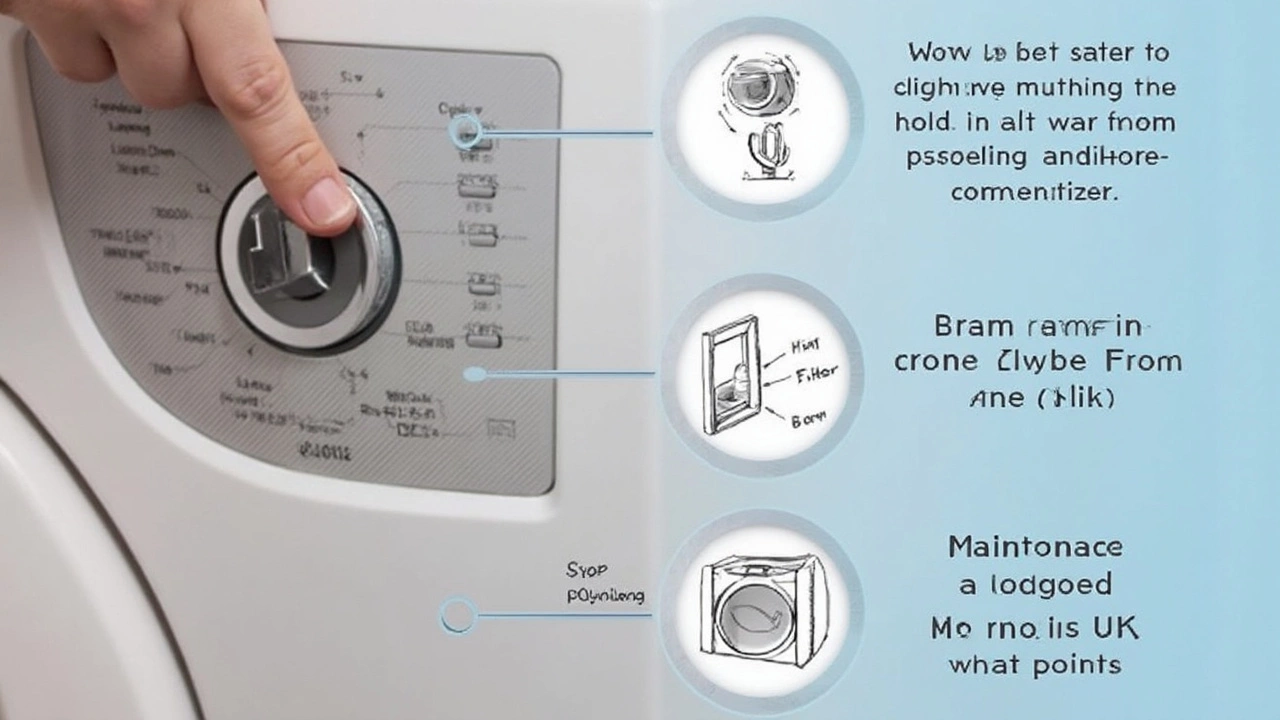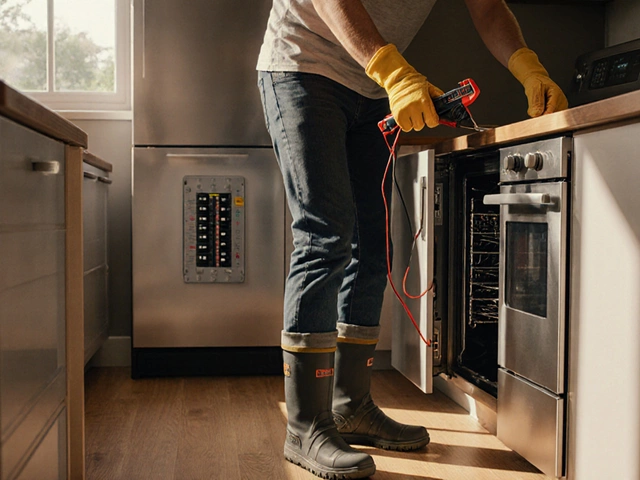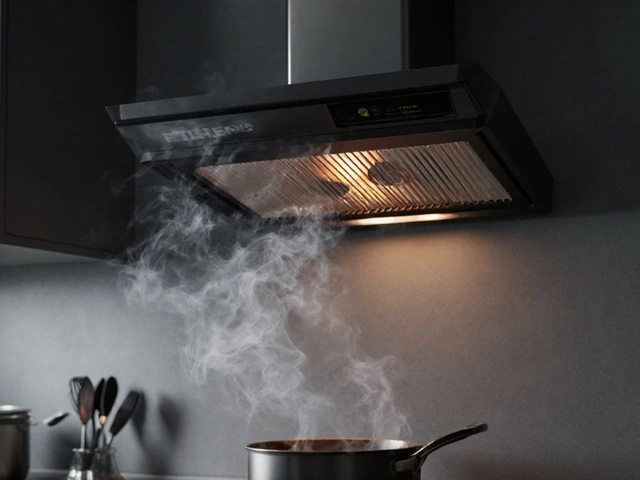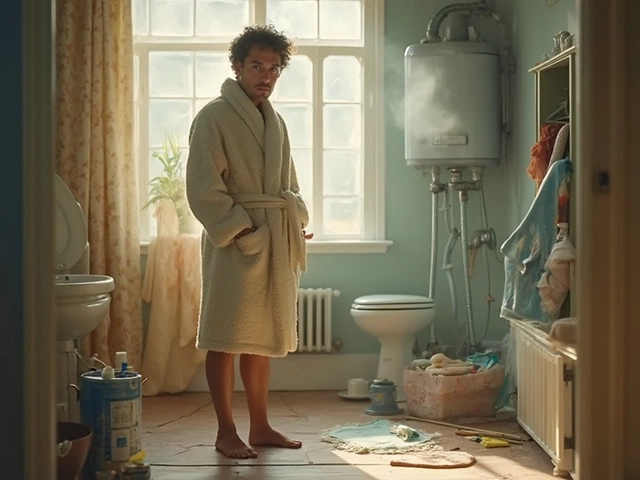Not sure if you should start saving up for a new tumble dryer? You’re not alone. These machines aren’t cheap, and nobody wants to replace theirs sooner than necessary. But how long are you supposed to expect yours to last, anyway?
Here’s the honest answer: most tumble dryers will keep going for about 10 years if you treat them well. That number can be higher or lower depending on how much laundry you do, how you care for the machine, and whether you ever ignore strange noises or weird smells coming from the drum.
But life expectancy isn’t just about the numbers; it’s about what you do day in, day out. Regular cleaning out of the lint filter (seriously, after every load) makes a bigger difference than you might think. Small things like checking the vent hose for blockages or keeping the area around the dryer clean can mean skipping repairs for years.
- How Long Does a Tumble Dryer Last?
- What Impacts Tumble Dryer Lifespan?
- Signs Your Dryer Is Nearing the End
- How to Make Your Dryer Last Longer
- Repair or Replace: What Makes Sense?
- Common Questions About Dryer Life
How Long Does a Tumble Dryer Last?
If you’re wondering how long you can rely on your tumble dryer life expectancy, most people can expect around 10 years of decent service. That’s the middle ground for home dryers, whether they’re vented, condenser, or heat pump models. But like anything you use a lot, results definitely vary.
The big brands like Bosch, Samsung, and Whirlpool often market their dryers as lasting between 8 and 12 years, with some models even coming with a 5–10 year warranty for parts. Cheaper models sometimes struggle to reach the decade mark, especially if they’re running daily in a big household.
Take a look at the real-world numbers in this quick table:
| Dryer Type | Typical Lifespan (Years) |
|---|---|
| Vented | 8–10 |
| Condenser | 9–12 |
| Heat Pump | 10–15 |
Your actual results depend on things like how often you use the machine, whether you keep up with basic cleaning, and if you jump on problems as soon as they show up. For instance, tossing in heavy loads every day or forgetting to clear out lint can cut a few years off your dryer's life.
It’s also worth mentioning that heat pump dryers, while more expensive at first, usually last the longest. They run at lower temperatures and put less stress on the parts. On the flip side, if your dryer is humming along with zero fuss at the 12-year mark, you’re one of the lucky ones. Most people start noticing issues between years 8 and 10.
What Impacts Tumble Dryer Lifespan?
If you want to know why some dryers run for over a decade while others quit early, it comes down to a handful of clear factors. First up: usage. If you dry several loads a week (hello, big families), your machine racks up wear and tear way faster than someone who only does laundry on the weekends. It’s like putting more miles on a car—the more you use it, the faster parts start complaining.
Secondly, maintenance matters. Little things like cleaning the lint filter after every load and making sure the vent stays clear are not just for show. Blocked vents mean heat builds up, which stresses out the motor and heating elements. If you ignore regular cleaning, you’re basically shortening your tumble dryer’s life on purpose.
Another big one is build quality. Cheaper models might save you some cash upfront, but they’re not usually built for the long haul. Well-known brands with solid reputation—think Bosch, Miele, or Samsung—tend to use hardier parts and pass more factory checks before hitting the shelves.
How you load the drum actually matters, too. Overloading makes the motor work way harder every cycle, which leads to early breakdowns. Too-light loads aren’t great either—they can throw off the balance and cause noisy vibrations that shake parts loose over time.
Environment plays a sneaky role. Stick your dryer in a damp garage or unventilated cupboard, and you’re encouraging rust, electronic issues, and sometimes even mold. Make sure your machine gets some fresh air around it and stays as dry as possible.
- Use the right settings for each type of load—cranking heat for every single load isn’t necessary and will wear things out fast.
- Keep an ear out for weird noises—squeaking, rattling, or thumping are all signs something’s up inside.
- Power surges and dodgy wiring make electrical parts fail sooner. Using a proper outlet and a surge protector goes a long way.
All these things combined decide whether your dryer makes it to that sweet 10-year mark, or if you’re out shopping for a new one after five. Treat your tumble dryer life expectancy like something you can control, and you’ll squeeze out every penny of value.
Signs Your Dryer Is Nearing the End
Tumble dryers usually don’t quit all at once. Instead, they start acting weird in ways that don’t seem serious at first. Spotting these early signs can save you from a cold, damp laundry surprise or a wallet-busting repair bill.
First, listen for clunky or grinding noises. If your dryer sounds rough, something is probably breaking down inside, like worn drum bearings or a busted belt. Another big clue is longer drying times. If your clothes take twice as long as they used to, even after emptying the lint filter, either the heating element is failing or the sensors aren’t working well anymore.
Here are some clear warning signs your dryer’s on borrowed time:
- It keeps shutting off in the middle of a cycle.
- Your laundry isn’t warm, even on a hot setting.
- There’s a burnt smell or visible scorch marks inside the drum.
- It rattles or vibrates more than usual, even on flat ground.
- Push-button controls misfire or don’t respond when pressed.
- You spot damp patches inside the machine, even hours after use.
One major tip: If repairs start getting costly and you’re calling the repair guy more than once a year, it may be time to think about a replacement. As quoted in a recent Which? appliance report:
“When a dryer is eight years old or more and starts needing regular repairs, putting money towards a replacement instead is often the smarter move.”
Pay close attention if your tumble dryer life expectancy seems cut short by these problems. It stings to say goodbye, but a dead or even malfunctioning machine eats energy and laundry time. Watch for these hints—your next load of socks will thank you.

How to Make Your Dryer Last Longer
If you want your tumble dryer to stick around for a full decade or more, you’ve got to show it some regular attention. Most breakdowns come from tiny issues piling up, not from a single massive failure. The good news? Simple habits can make a major difference, even if you’re the kind of person who hates chores (I get it—my cat Whiskers and I both hate the vacuum noise!).
- Tumble dryer life expectancy jumps when you keep the lint filter clear. Clean out that filter after every single load. You’ll avoid overheating and fires, plus your dryer works better and uses less power.
- Every few months, check the vent hose for blockages. Lint and dust can build up inside the hose, which means your machine has to work harder and risks overheating.
- Give the drum and sensors a quick wipe. Residue from dryer sheets or fabric softener can mess with the sensors, confusing your machine and making it run longer than needed.
- Don’t overload the drum. Your dryer has a max capacity for a reason—trying to shove in the world’s biggest blanket will put a real strain on the motor and belt.
- Mind the sounds. Weird clunks, screeching, or thumping noises are never just “quirks.” If you catch them early and call a pro or look up a fix, repairs are way cheaper and easier.
Here’s a quick table with some must-do actions and how often to do them:
| Task | How Often |
|---|---|
| Clean lint filter | After every load |
| Check vent hose | Every 3-6 months |
| Wipe sensors/drum | Monthly |
| Check for odd noises | Every use |
| Inspect door seal | Twice a year |
Never ignore anything unusual. Catching small problems early is almost always cheaper than waiting until the whole thing stops working. Plus, taking care of your dryer saves you money on your energy bill—so your wallet will thank you, too.
Repair or Replace: What Makes Sense?
It’s painful watching a trusty dryer struggle through a cycle or start making weird rattling sounds. The real question is, do you fix it, or just get a new one? Here’s an honest, practical way to decide.
First, check the age. If your dryer is five years old or less, repairs usually make sense—most parts break early because of bad luck, not overall wear. If your machine is closing in on that 10-year mark, and it’s already giving you headaches, to be honest, you might just be patching up endless problems if you choose to repair.
The price tag matters, too. As a rule of thumb, if the repair will cost more than half the price of a new dryer, put your money toward a new one instead. For example, if a new dryer costs £400 and your repair bill is £220, replacement is smarter. This is especially true if your current model isn’t energy efficient—new dryers use way less power and could save you cash over time on your bills.
- tumble dryer life expectancy drops fast if you ignore certain problems. If you smell burning, notice clothes not drying, or the drum isn’t spinning, get a quote for repairs first—don’t just hope it’ll fix itself.
- Simple fixes like replacing the belt or a thermostat often run under £100 and can add years to your machine. The moment you start talking about drum replacements or expensive electronic boards, though, it’s time to think about upgrading.
- Check your warranty. If you’ve still got coverage, repairs might be free or a lot cheaper through the manufacturer. No need to throw money away just because the machine is getting on in years.
A quick tip—write down your dryer’s serial number and model before calling for repairs. Techs love this. It saves them time diagnosing and quoting, and it’ll make the entire process smoother for you.
If you end up replacing your dryer, check with your local recycling center—they’ll often take away the old one for free or a couple of quid, and you’ll avoid that awkward moment hauling it to the curb.
Common Questions About Dryer Life
People always want straight answers when it comes to how long their dryers should hang in there before cashing out. You might be surprised by some facts and what really counts toward the machine’s lifespan.
The most common question is: "Should my tumble dryer really last 10 years?" The short answer—yes, with regular care. According to a 2023 survey from the Appliance Standards Awareness Project, the average lifespan across major brands is right around 10 years for vented dryers and a little less, about 8 years, for condenser models. Cheaper brands might bow out sooner, while a premium brand can push beyond the decade mark if serviced properly.
Here's a handy look at average life spans of popular types:
| Dryer Type | Average Lifespan |
|---|---|
| Vented | 10-13 years |
| Condenser | 8-10 years |
| Heat Pump | 10-15 years |
Lots of folks wonder if fixing an old dryer is worth it or if that’s just throwing cash down the drain. Here’s the easy rule: if the repair costs more than half of a new model, it’s time to say goodbye. Plus, if your machine is more than 8 years old and giving you constant trouble, it’ll probably cost more to keep patching it up than to just get a new one.
Another common worry is about safety. “Does an old dryer get riskier?” It might. Faulty heating elements, broken thermostats, or even just a buildup of lint can start a fire. That’s why most fire brigades recommend cleaning the lint filter every cycle—it really does matter. In the UK alone, tumble dryer fires caused almost 500 house fires in 2022, mostly because folks skipped this simple task.
Lastly, people ask if proper maintenance really makes a difference. Absolutely. Small habits like checking the drum for stray socks (trust me, Whiskers leaves his around) and keeping the vent clear can help your tumble dryer life expectancy stretch past the 10-year mark. It’s basically free insurance for your appliance.
- Clear the lint filter after every use.
- Check vent hoses once a month for blockages.
- Don’t overload the drum—your dryer’s motor will thank you.
- Listen for new noises—catching problems early saves headaches later on.
Knowing these facts helps you decide when to repair, when to replace, and how to squeeze those extra years out of your machine without any guesswork.







